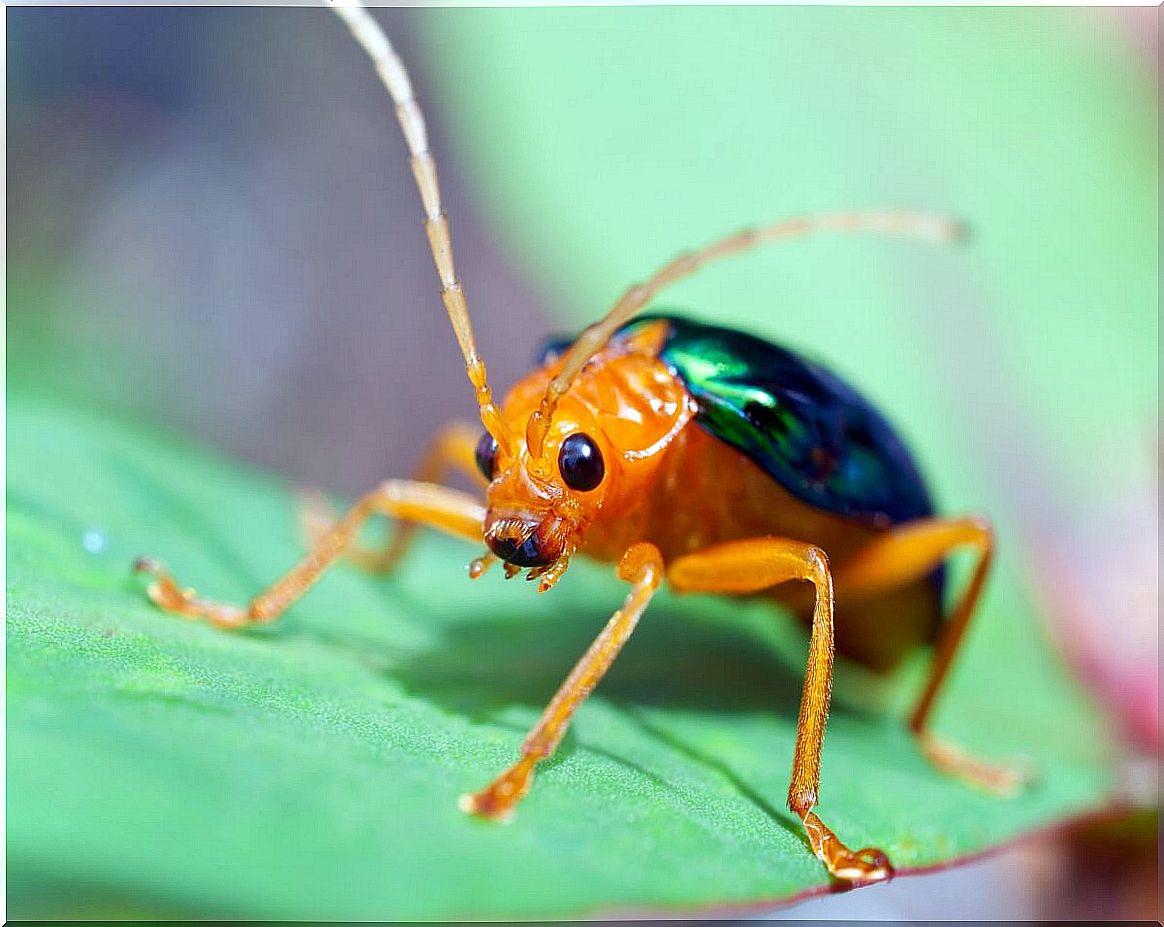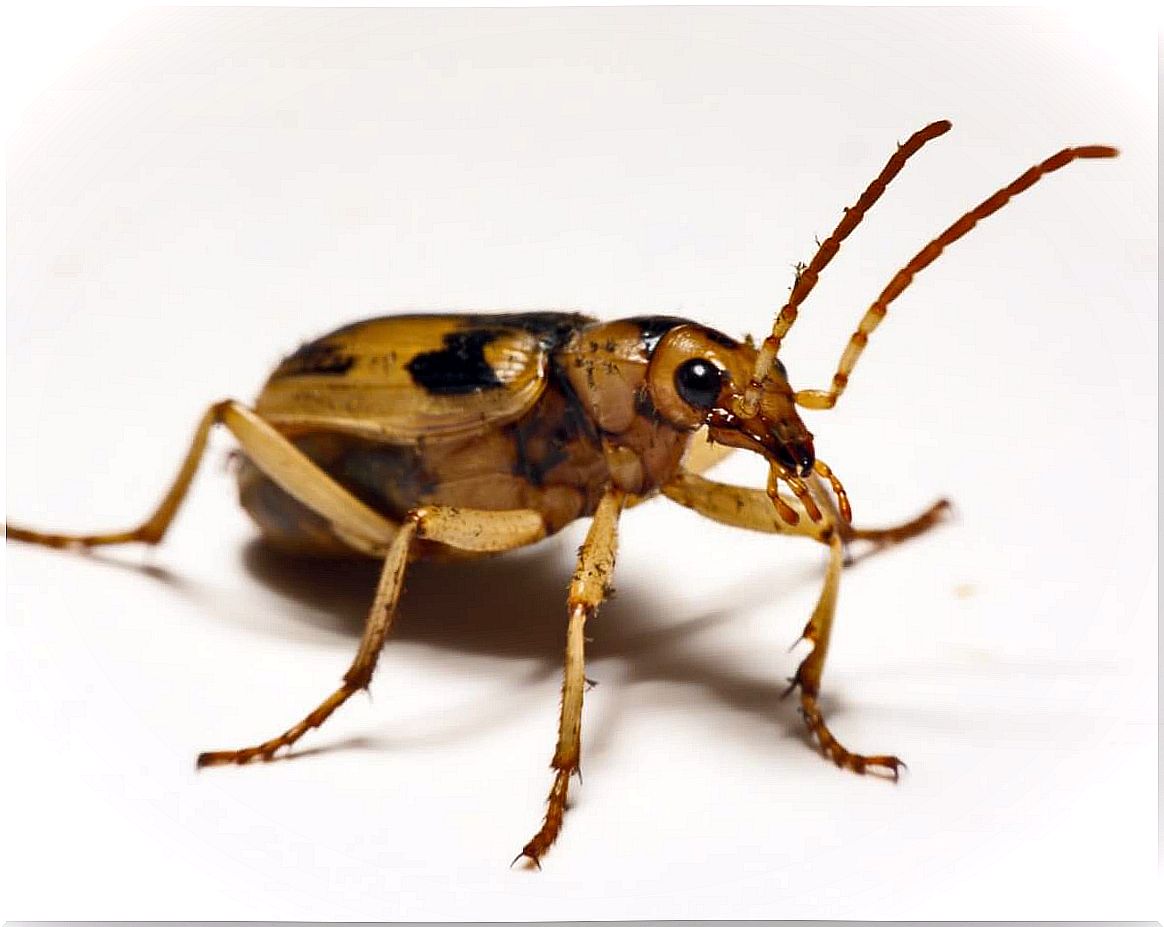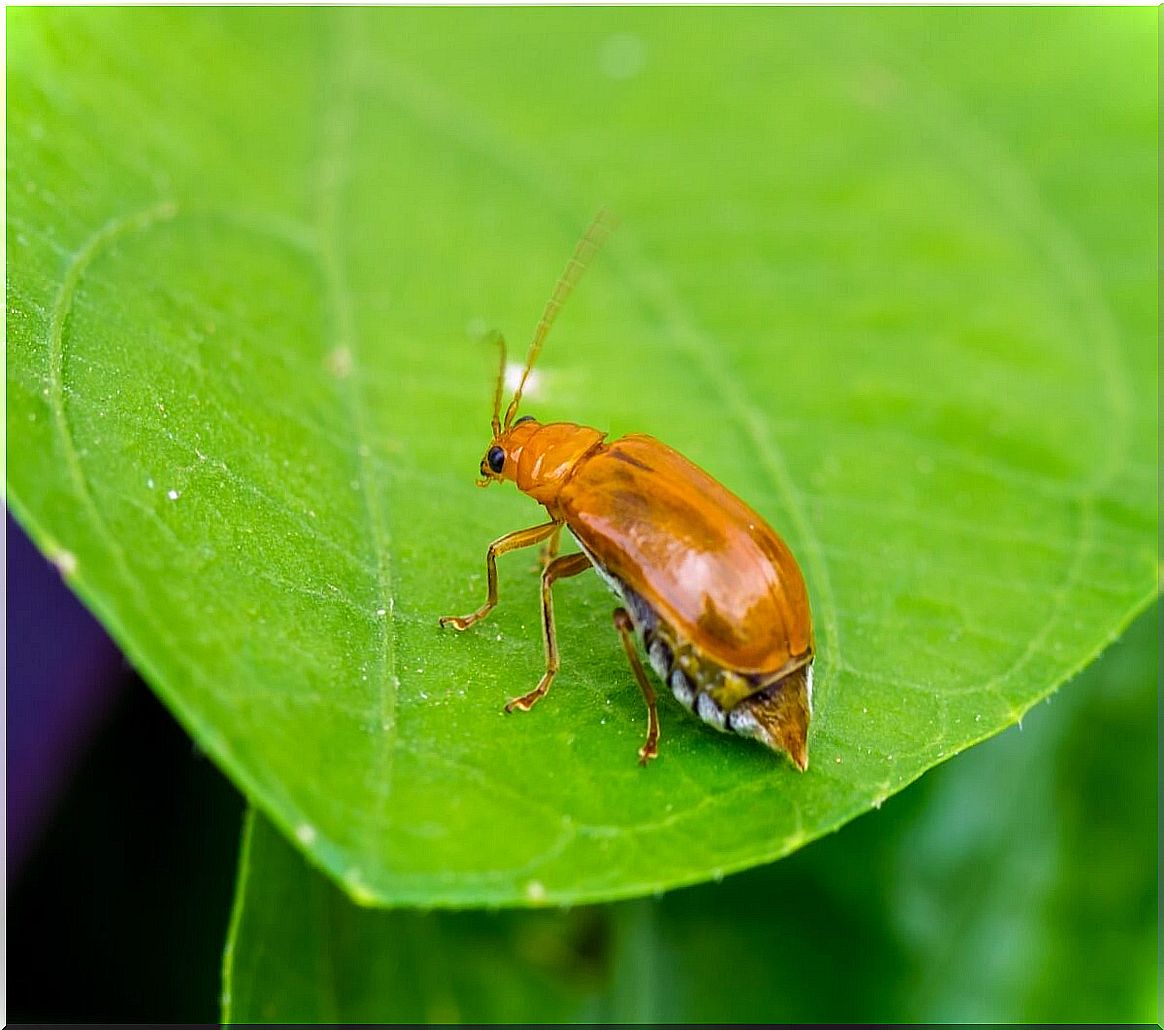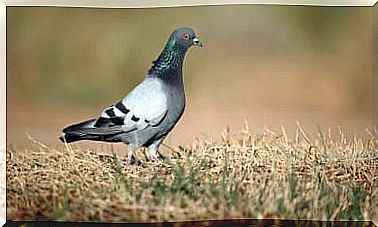Bombardier Beetle: Habitat And Characteristics

The term “bombardier beetle” designates various coleopterans included in the Carabidae family . The more than 500 species of beetles from the Brachinini, Paussini, Ozaenini and Metriini tribes that are collected in this taxon have one fascinating characteristic in common: When threatened, these invertebrates excrete a corrosive chemical compound.
Although there are many species of bombardier beetles, we are going to focus our attention on the genus Brachinus, especially on the Brachinus fumans species , one of the most famous. If you want to know more about this fascinating group of coleopterans, read on.
Habitat of the bombardier beetle
As we have said, this term encompasses more than 500 different species and it would be impossible to describe the habitats of all of them. Only the genus Brachinus – one of many in this taxon – has species with very disparate ranges of distribution, ranging from North America to Spain, through the Caribbean, Ukraine, Morocco, Portugal, France and many other regions.
For its part, the Brachinus fumans species is found only in North America, along with Brachinus alternans and Brachinus audustipennis , among others. In general, bombardier beetles are cosmopolitan and generalists, since they settle in almost any environment with a minimum of humidity and temperature to hatch their eggs.

Physical characteristics
Like all insects, bombardier beetles have a segmented body, made up of a head, thorax, and abdomen. All are characterized by having lamellar antennae made up of 11 knuckles, 6 legs that arise from the thorax and an abdomen of 10 segments in males – 9 in females.
In addition, these beetles carry hardened elytra on the dorsal part of their body. These structures guard the wings, which are considered vestigial in American species and are not used for flight. As a compensatory mechanism, bombardier beetles have developed a most fascinating chemical defense system.
The Brachinus fumans species has a general orange coloration. On the other hand, its elytra are of a metallic black and green tone, which varies according to the incidence of light. Other species are very different: for example, Brachinus alternans stands out for its yellow body tone and very noticeable green elytra. These beetles do not usually grow more than 2.5 centimeters.
Food and behavior
Most species of bombardier beetles are carnivorous, which also includes their larvae. These invertebrates usually go out at night in search of their victims, in this case small insects. However, they are gregarious animals and tend to congregate in the hollows of logs and stones when they are not looking for food.
In addition, their life cycle is quite short, as is usual within the group of beetles. These invertebrates lay their eggs underground, in places where decomposing organic matter is abundant – such as under the carcasses of animals.
The larva that emerges from the egg is very small in size and must undergo successive molts until it reaches its last stage. When it has been fed enough and has energy reserves, it forms a pupa around it and undergoes metamorphosis. Adult specimens only live a few weeks, which is essential for foraging and reproducing.
Defense mechanism
If these animals stand out for something, it is, without a doubt, their ability to defend themselves against predators. As studies published in the journal Science indicate, bombardier beetles are capable of generating internal “explosions” thanks to the bicameral construction of their pygidial glands , located in the abdomen.
Each of the pygidial glands contains 2 chambers: a reserve chamber (RSC) and a reaction chamber (RXC), which converge in an outlet duct (EC), located at the end of the abdomen. On the other hand, an interchamber valve (ICV) separates the 2 contents of both chambers. These are covered by a cuticle, which protects the animal from the corrosive properties of stored fluids.
The reserve chamber (RSC) contains in its interior a liquid composed of 25% hydrogen peroxide and 10% hydroquinone, in addition to other non-reactive compounds. When necessary, the interchamber valve is opened by muscular action and the fluid is mixed with another fluid phase, which contains catalase and peroxidase enzymes.
The result is 1,4-benzoquinone, which appears after a highly exothermic reaction that liberates oxygen in the form of gas, water, steam and heat – it reaches a temperature of up to 100 ºC. As a result, a boiling corrosive liquid is propelled from the outlet duct (EC), capable of irritating the eyes and respiratory system of vertebrates that are exposed to it.

An unusual defense mechanism
Incredible true? The bombardier beetle creates a veritable explosion in its abdominal environment, through an exothermic reaction unique in the animal kingdom. As these invertebrates lack other defense methods, they rely on the most extreme chemistry to solve their deficiencies.
Bombardier beetles are found in many parts of the world, so it is possible that some species inhabit the fields in your region of residence. Seeing them in their natural environment is a real spectacle, but remember to respect their space if you don’t want to be very scared.









